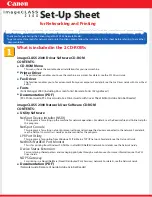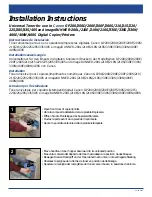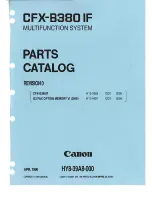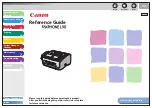
Overview of Authentication and Accounting Feature
413
A
u
then
ti
ca
ti
on a
nd
Ac
co
u
nt
ing
F
e
at
u
res
14
•
When you register user information on a remote authentication server, use up to 32 single-byte
characters for a user ID and up to 128 single-byte characters for a password. Note, however, that up
to 32 single-byte characters are allowed for an SMB authentication password.
Note
•
The user information used for Login to Remote Accounts can be stored on the machine. For more
information, refer to "Save remote accounts in this machine" (P.314) and "Delete Remote Accounts"
(P.314).
Authentication Methods
User ID Authentication
Authentication is performed using user information registered on the machine or a remote
server in advance. The users are required to enter their user IDs and passcodes with the
numeric keypad or the touch screen of the machine.
Smart Card Authentication
Authentication is performed using the card number or user information registered on the
smart card. Register such information on the machine or a remote server in advance and use
the smart card for authentication.
Note
•
Authentication is performed using the smart card and IC Card Reader (optional).
•
For information about setting procedure of authentication with IC Card Reader, refer to
"Configuration for IC Card Reader (Optional)" (P.429).
Combined Use of Smart Card Authentication and User ID Authentication
You can use smart card authentication in combination with user ID authentication.
However, when [Login Type] is set to [Login to Local Accounts], you need to enable user ID
authentication.
To enable user ID authentication, refer to "Smart Card Link Mode" (P.313).
Types of Account Administration
The following describes the types of account administration (Accounting Type) available on
the machine.
Important •
When [Login to Remote Accounts] is set for [Login Type] and [Authentication Agent] is set for
[Authentication System], ApeosWare Authentication Management or ApeosWare Authentication
Agent automatically becomes an accounting/authentication server.
Note
•
Some Accounting Types may be grayed out and not selectable depending on the Login Type
selected. For more information, refer to "Authentication and Accounting Relationship" (P.414).
Local Accounting
Local Accounting performs account administration on the machine.
In Local Accounting, account administration is performed for each user using the login
users’ information registered on the machine.
Note
•
Auditron reports can be printed when the login user is a system administrator, a user set to have
system administration authority, or a user set to have account administration authority. For printing
procedure of the report, refer to "Print Reports" (P.108).
For information on the types of jobs that can be monitored, refer to "Jobs Manageable by Account Administration" (P.415).
Network Accounting
Network Accounting performs account administration using user information managed by
a remote service.
In Network Accounting, the remote server collects job data stored on the machine and
counts up the numbers of pages processed for each user.
Summary of Contents for ApeosPort-V C5580
Page 14: ...14 ...
Page 38: ...1 Before Using the Machine 38 Before Using the Machine 1 ...
Page 320: ...5 Tools 320 Tools 5 ...
Page 376: ...10 Using IP Fax SIP 376 Using IP Fax SIP 10 ...
Page 388: ...12 Using the Server Fax Service 388 Using the Server Fax Service 12 ...
Page 638: ...15 Problem Solving 638 Problem Solving 15 ...
Page 786: ...16 Appendix 786 Appendix 16 ...
















































